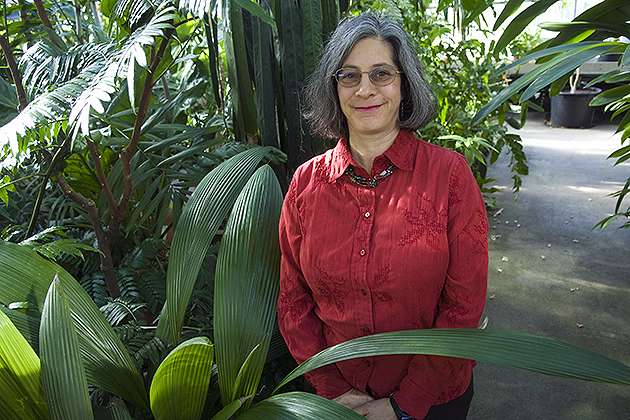In early May, Professor Robin Chazdon, a tropical ecologist in the Department of Ecology and Evolutionary Biology in the College of Liberal Arts and Sciences, was one of 18 scientists from around the world summoned to a special committee on tropical forest ecology and climate change at the Royal Society and St. James’s Palace in London. Prince Charles attended the presentation of the group’s final memorandum.
The committee included 21 scientists from the U.S. and around the world, government officials, and other leaders from civil society and the private sector. In the meeting, the committee discussed the current state of science and politics surrounding tropical forest conservation. Several members of the Prince’s Sustainability Unit were also present.

Chazdon chatted with us about her experience.
How were you chosen to serve on this committee?
I study tropical forest regeneration and succession at La Selva, a research field station in Costa Rica, and have been monitoring tree growth, survival, and recruitment in a series of eight one-hectare forest plots of different age that were formerly pastures. Three of these plots are within La Selva, and five are on farms in the region (Chilamate, La Virgen, Tirimbina). We’re trying to understand the factors that affect forest succession, and are testing whether successional changes in forests of different age are consistent with patterns we observe over time. I am also heading up a project that includes similar studies in Mexico and Brazil. Basically, we are finding that temporal patterns are highly variable and do not follow the predictions based on static data.
How had they heard about you?
I am becoming known as an expert on tropical forest regrowth following major disturbances, and have just written a scholarly book on the subject, called “Second Chance: Tropical Forest Regeneration in an Age of Deforestation,” which will be published in 2014 by the University of Chicago Press.
How did you react when you received the royal summons?
I was very enthusiastic and excited about the invitation. The summons came from Yadvinder Malhi, an ecologist at Oxford University well-known for his work in Amazonia on effects of climate change on tropical forests.
Of the climate and tropical forest ecology concerns discussed at the meeting, what do you think is the most pressing?
What stood out to all of us is the difficulty of understanding how multiple factors are affecting tropical forests. Things like land-use change, forest fragmentation, and logging are all big factors, and then there’s climate change on top of all of this. We still don’t understand what factors lead to forest recovery in some areas but not in others. We are concerned that multiple stressors are bringing tropical forests closer to their “tipping points.”
What do you think was the biggest takeaway from the meeting?
The committee agreed that we need increased attention to the bulk of tropical forests – about 70 percent – that are affected by human activities such as logging and secondary forest regeneration. I’ve been saying this for years, but this statement emerged from the consensus of ecologists at the meeting.
Who were you most interested to meet at the meeting?
I enjoyed meeting the members of the Prince’s Sustainability Unit. They are very knowledgeable. I also enjoyed meeting several colleagues who work in Amazonia and whom I have published with but never met personally. I prepared a poster about a new initiative I am organizing called the Tropical Reforestation Network. It’s a research coordination network to investigate the socio-ecological aspects of reforestation in the tropics and it has been recommended for funding by the National Science Foundation. The sustainability unit asked if they could keep the poster to put up in their offices, so it’s there now. I hope they bring wealthy donors to walk by it on occasion!
What were your impressions of Prince Charles and the palace?
He was very pleased to speak in front of the scientists gathered, and knew this was an opportunity for the press to hear his views as well. He was very passionate about conserving tropical forests. Everyone I spoke to who works with him emphasized his deep concern for a wide range of environmental issues.
We were served tea and cookies after the event, which was very lovely. St. James Palace is like a museum and is very beautiful.
How did you prepare for the meeting and for visiting the palace?
I prepared my presentations for two weeks ahead of time: I gave a poster and two talks!
I bought a new black dress, a pretty white sweater, and new shoes for the occasion. It was a perfect outfit. But by the end of the day my feet really hurt, because I’m not used to wearing heels.


